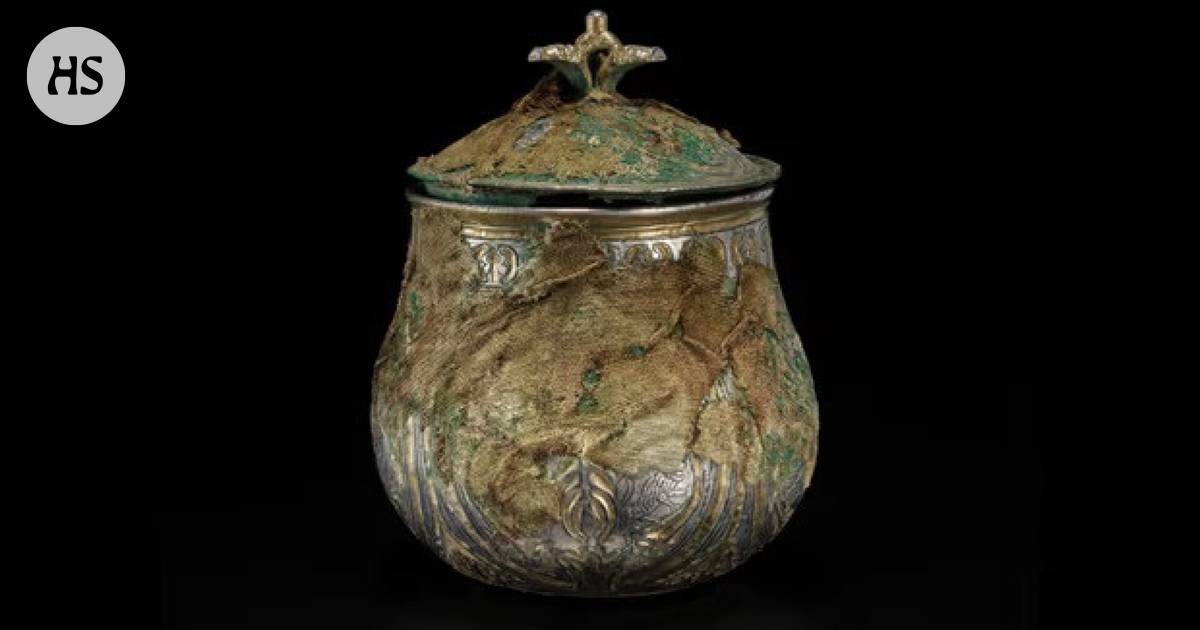Archaeology|The treasure cache was found with a metal detector on Church of Scotland land in Balmaghie, Western Scotland in 2014.
Covered the dish is silver. Its sides are decorated with a fiery altar, a crown rising from the fire, and various animals from leopards to tigers. The surface is covered by the rips of over a thousand-year-old fabric.
Such is perhaps the most significant single object of the Viking Age hoard discovered in Scotland ten years ago. It will soon be on public view for the first time at the opening of the British Museum At the Silk Roads exhibition.
The treasure cache was found with a metal detector on the lands of the Church of Scotland in Balmaghie, Western Scotland in 2014. Nothing like it had been discovered before in the whole of Britain from the Viking Age: more than a hundred objects in total from a small gold bar to brooches, buckles, boxes and a bishop’s cross.
The weight of the gold, silver and precious stone treasure was five kilograms, and it had been hidden in the ground more than a thousand years ago, around the year 900. Soon after the treasure was found, it was acquired by the National Museum of Scotland. Some of the objects come from Britain, some from Ireland, some from other parts of Europe as far back as ancient Byzantium.
Perhaps the longest journey, halfway around the world, was made by a silver vessel decorated with the image of a fiery altar, the researchers estimate. From the side of the dish says the British newspaper The Guardian.
A fiery altar and other decorations connect the vessel to Zoroastrianism, the dominant religion of ancient Persia before the rise of Islam in the 6th century. The metal of the vessel has been traced by isotopic analysis to the geographical area of present-day Iran.
“The crown rising from the fire indicates that the dish was made for royalty,” says the interviewee of The Guardian Martin Goldbergwho is in charge of the National Museum of Scotland’s Viking Age collections.
Members of the pre-Muslim Sassanid ruling family were often depicted hunting leopards or tigers.
Large felines also decorate the sides of the silver dish. The dish is 14 centimeters high, and inside it were many of the finest small objects in the hoard. They include, for example, a lotion jar made of rock crystal, elaborately decorated with gold.
“An heirloom passed down in a powerful family,” Goldberg evaluates the silverware.
to Scotland is thousands of kilometers from the territory of ancient Persia or present-day Iran.
How could the vessel have traveled the distance?
Goldberg has an educated guess on the matter:
“Pilgrimages were made from Europe to the Holy Land. It’s not that long of a journey from there to where this dish comes from.”
